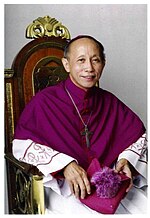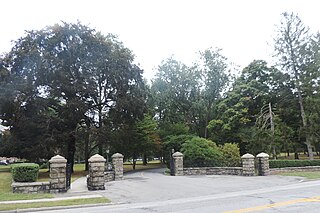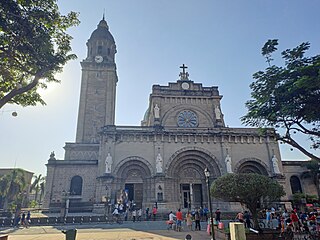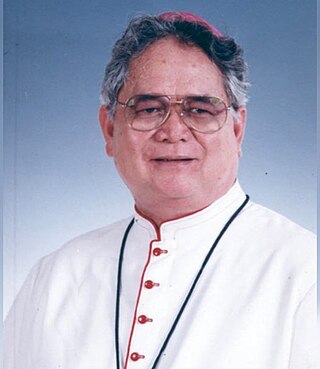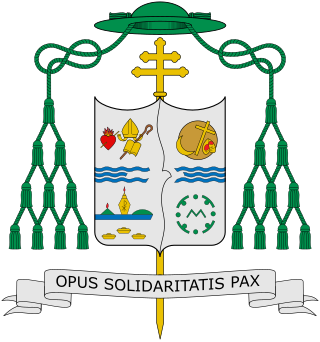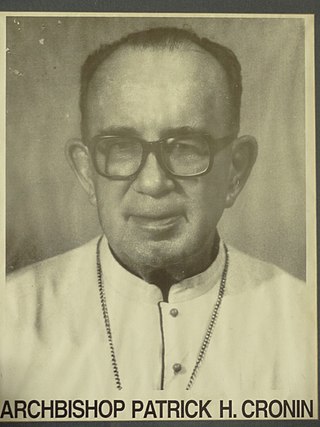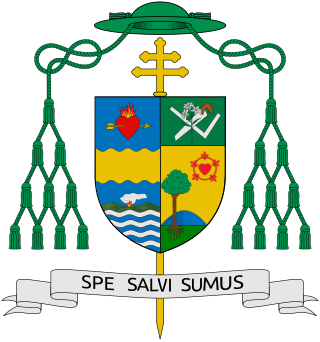History
Early history
During the Spanish era, only the Province of Misamis existed, which included the present Provinces of Misamis Oriental and Misamis Occidental, run by the civil government in Cebu. The Recollect missionaries arrived from Cebu and started a new mission in the province.
A civil government of its own only started in 1901, but because one part of it was separated by Iligan Bay, the government decided to divide the province into two.
Today, the Metropolitan Cathedral of Saint Augustine is one of twelve founded by the Order of Augustinian Recollects in the Philippines.
The whole of Mindanao and Sulu were part of the Diocese of Cebu until 1865, when the western half of the island came under the jurisdiction of the Diocese of Jaro, based in Panay.
Pope Leo XIII then established the Diocese of Zamboanga, separating it from Jaro and making it the first diocese in Mindanao, though Pope Pius X executed this in 1910. From that year on, then-Cagayan de Misamis became a part of the Diocese of Zamboanga.
Establishment
On January 20, 1933, Pope Pius XI, through the Papal bull "Ad maius religionis", divided Mindanao between the Diocese of Zamboanga in the south and a new "Diocese of Cagayan" in the north, to which he appointed an American Jesuit, James T.G. Hayes of New York City, as its first bishop. [3]
More than a year later, on April 28, 1934, Pope Pius XI promulgated an apostolic constitution Romanorum Pontificum semper, separating the dioceses of Cebu, Calbayog, Jaro, Bacolod, Zamboanga, and Cagayan de Misamis from the Ecclesiastical Province of Manila. The same constitution also elevated the diocese of Cebu into an archdiocese while placing all the newly-separated dioceses under a new ecclesiastical province, with Cebu as the new metropolitan see. [4]
Its original territory included the provinces of Surigao, Agusan, Bukidnon, Misamis Oriental, Misamis Occidental, Lanao, and the island of Camiguin. A series of divisions, however, gradually reduced this territory, with the creation of the Diocese of Surigao in 1939 and the Diocese of Ozamiz in 1951. [3]
During the episcopacy of Bishop Hayes, he founded two secondary schools, which are later raised into colleges: the Lourdes Academy for Girls in 1928 (run by the Religious of the Virgin Mary and raised into College status as Lourdes College in 1947) and the Ateneo de Cagayan for Boys in 1933 (run by the Jesuits and raised into University status as Xavier University – Ateneo de Cagayan in 1958). [5] [6]
Archdiocese
On June 29, 1951, during the thirteenth year of Pope Pius XII, the Papal bull "Quo Phillipina Republica" was decreed in order to serve better and more easily the spiritual needs of the Lord's flock in the Philippine Republic. The bull contained the Pope's decision to create new Dioceses and to constitute new Ecclesiastical Provinces in the Philippines. [3]
The Dioceses of Lingayen, Cáceres (Naga City), Nueva Segovia (Ilocos), Tuguegarao, Legazpi, and Sorsogon, as well as the Prelature Nullius of Batanes and Babuyanes were withdrawn from the Metropolitan Archdiocese of Manila, while the Dioceses of Bacolod, Cagayan de Oro, Capiz, Jaro, Surigao, and Zamboanga, as well as the Prelatures Nullius of Cotabato and Sulu, Davao, and Ozamiz were withdrawn from the Metropolitan Archdiocese of Cebu.
From these Dioceses, four new Ecclesiastical Provinces were constituted, namely: Nueva Segovia, Cáceres, Jaro, and Cagayan de Oro. The Episcopal seats of these dioceses were elevated to the rank and dignity of Metropolitan Archbishops. Henceforth, Hayes became the very first Metropolitan Archbishop of Cagayan de Oro.
Later on, the Apostolic Prefecture of Sulu, the Prelatures Nullius of Marbel, Tagum, Malaybalay, and Iligan, as well as the Dioceses of Butuan and Tandag became suffragans of the newly-elevated "Archdiocese of Cagayan de Oro".
Eventually, four other archdioceses were established: Zamboanga in 1958, Davao in 1970, Cotabato in 1979, and Ozamiz in 1983. At present, there are five ecclesiastical provinces in Mindanao.
The Columban mission and Patrick Cronin
In 1952, the first Columban missionaries arrived in Cagayan de Oro as a response to the Archbishop's invitation, because he felt the dearth of priests who would care for his flock.
In 1956, in order to respond to the growing number of priests in the diocese, the San Jose de Mindanao Seminary was opened, with Theodore A. Daigler, SJ, as its first rector. [7]
In 1958, the Maria Reyna Hospital was opened and directed by the Sisters of Saint Paul of Chartres.
After long years of service to the people of Cagayan de Oro and with so much effort to put up the foundations of the Archdiocese since his arrival in 1926, Archbishop Hayes, the modest and humble shepherd of Cagayan de Oro for almost half a century, retired in 1971.
On January 12, 1971, Patrick H. Cronin, an Irish Columban missionary and the former Bishop-Prelate of Ozamiz, was installed as the second Archbishop of Cagayan de Oro.
In 1976, through the initiatives of Archbishop Cronin, the House of Friendship, located amidst the slums of Santo Niño in Barangay Lapasan, was opened in order to cater to the needs of the orphans, neglected children, aged, unwed mothers, physically handicapped, refugees, stranded persons, transient indigents, and victims of calamities. It would later be run by the Canossian Daughters of Charity in 1984 and was renamed Balay Canossa. [8]
At the age of 74, after serving the people of Cagayan de Oro with utmost love and care, Archbishop Cronin decided to retire due to old age and settled at Saint Patrick's House on Seminary Hill in Barangay Camaman-an, which he intentionally built as a retirement home and, at the same time, a home for the aged, sick, and incapacitated diocesan priests of the Archdiocese. To this day, priests get together there on Mondays for games, meetings, and prayers.
Recent history
Pope John Paul II later accepted Cronin's resignation as Archbishop, which took effect on January 5, 1988. Jesus B. Tuquib, then-Coadjutor Archbishop, succeeded as the third Archbishop of Cagayan de Oro.
On March 4, 2006, Pope Benedict XVI accepted the resignation of Archbishop Tuquib and, at the same time, nominated Antonio J. Ledesma, then the Bishop-Prelate of Ipil, to succeed him and was installed as the fourth Archbishop of Cagayan de Oro on May 30, 2006. [9] [10]
During Archbishop Ledesma's term, he has led the Catholic Bishops' Conference of the Philippines as Chairman of the Episcopal Commission on Inter-religious Dialogue. [11] [10] He has convened local religious leaders in inter-religious dialogues on different social issues. [12]
On June 23, 2020, Pope Francis accepted the resignation of Archbishop Ledesma and appointed Bishop José A. Cabantan of Malaybalay as the fifth Archbishop of Cagayan de Oro. His installation took place on August 28, 2020, during the Feast Day of Saint Augustine. [13] [14]














